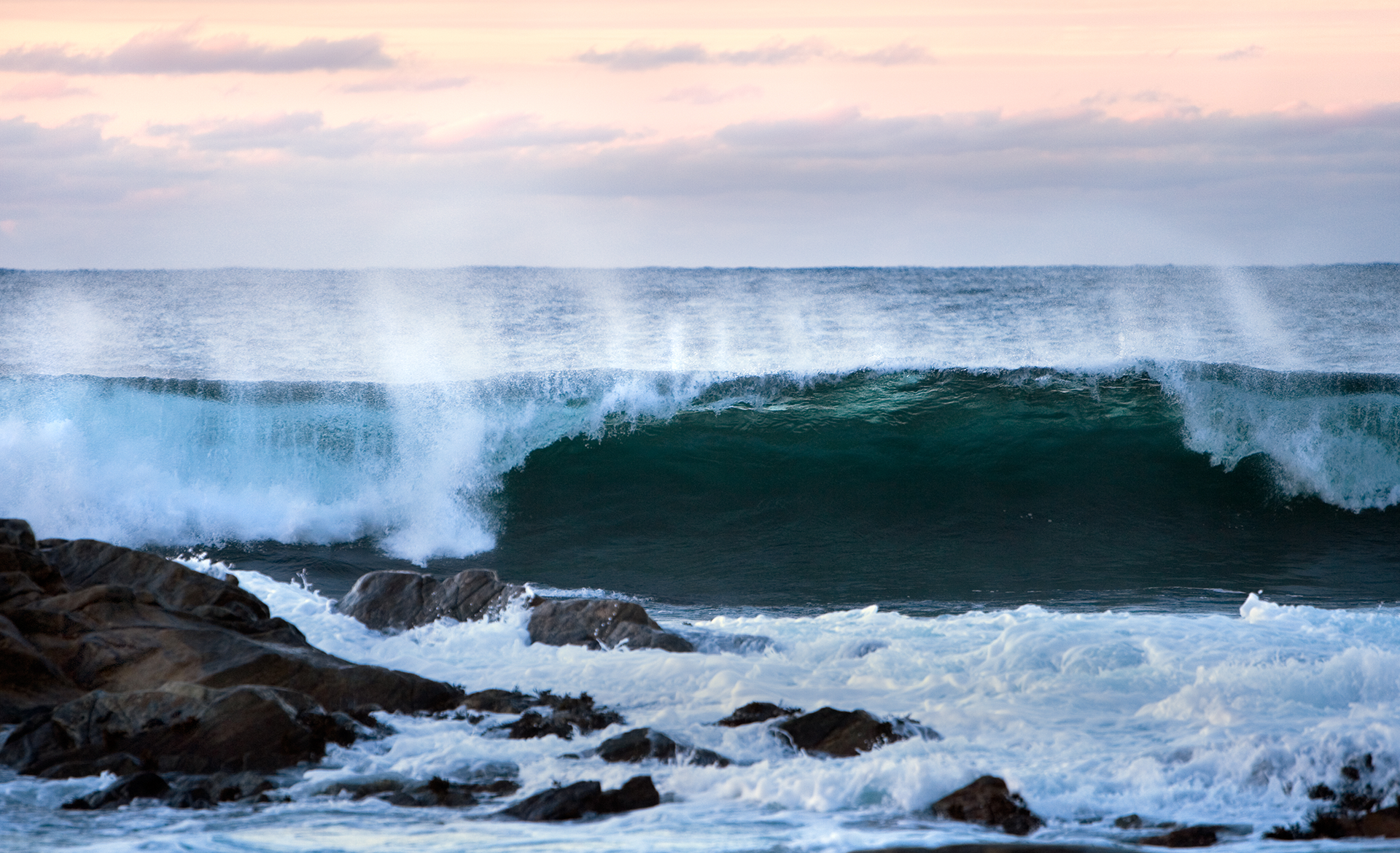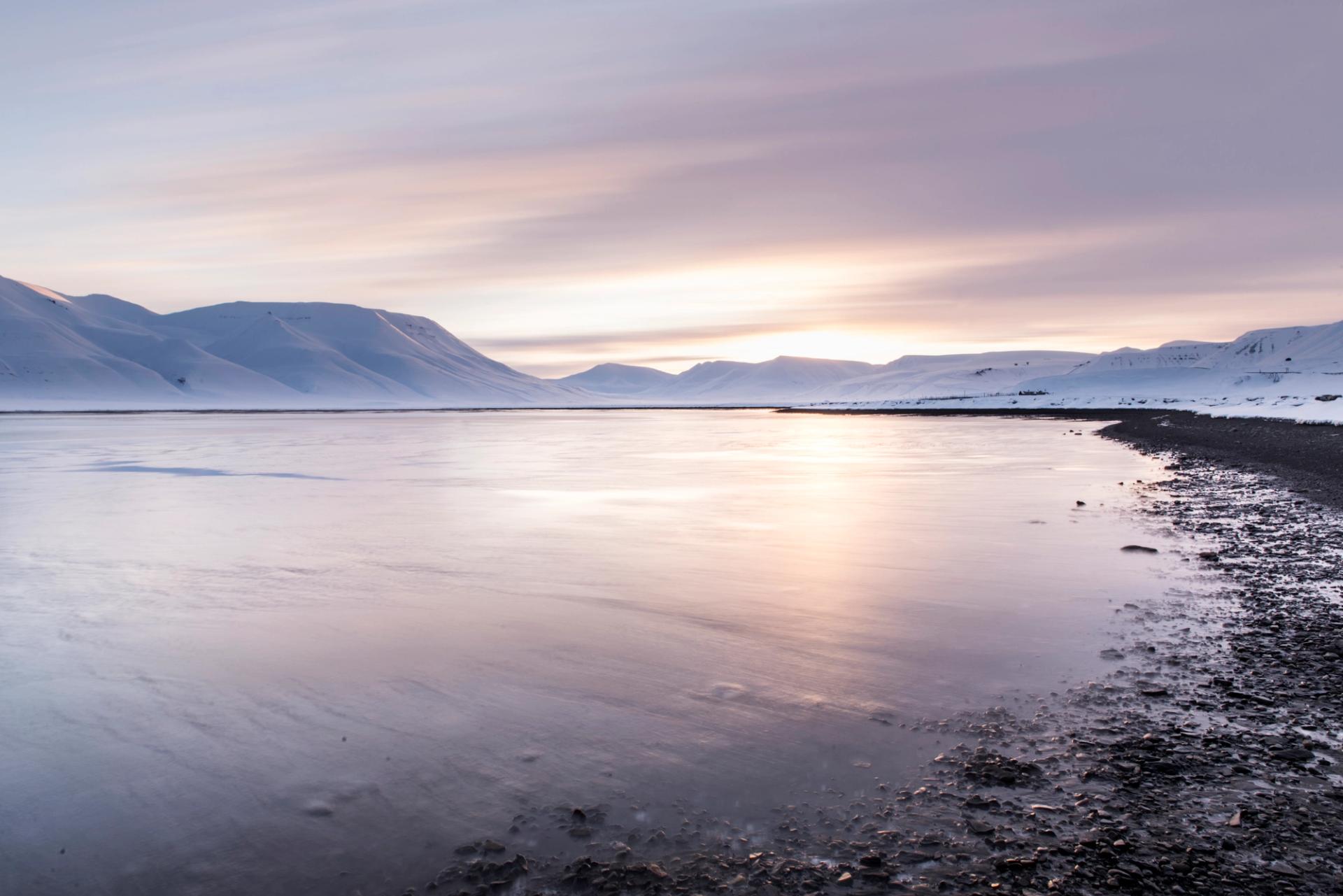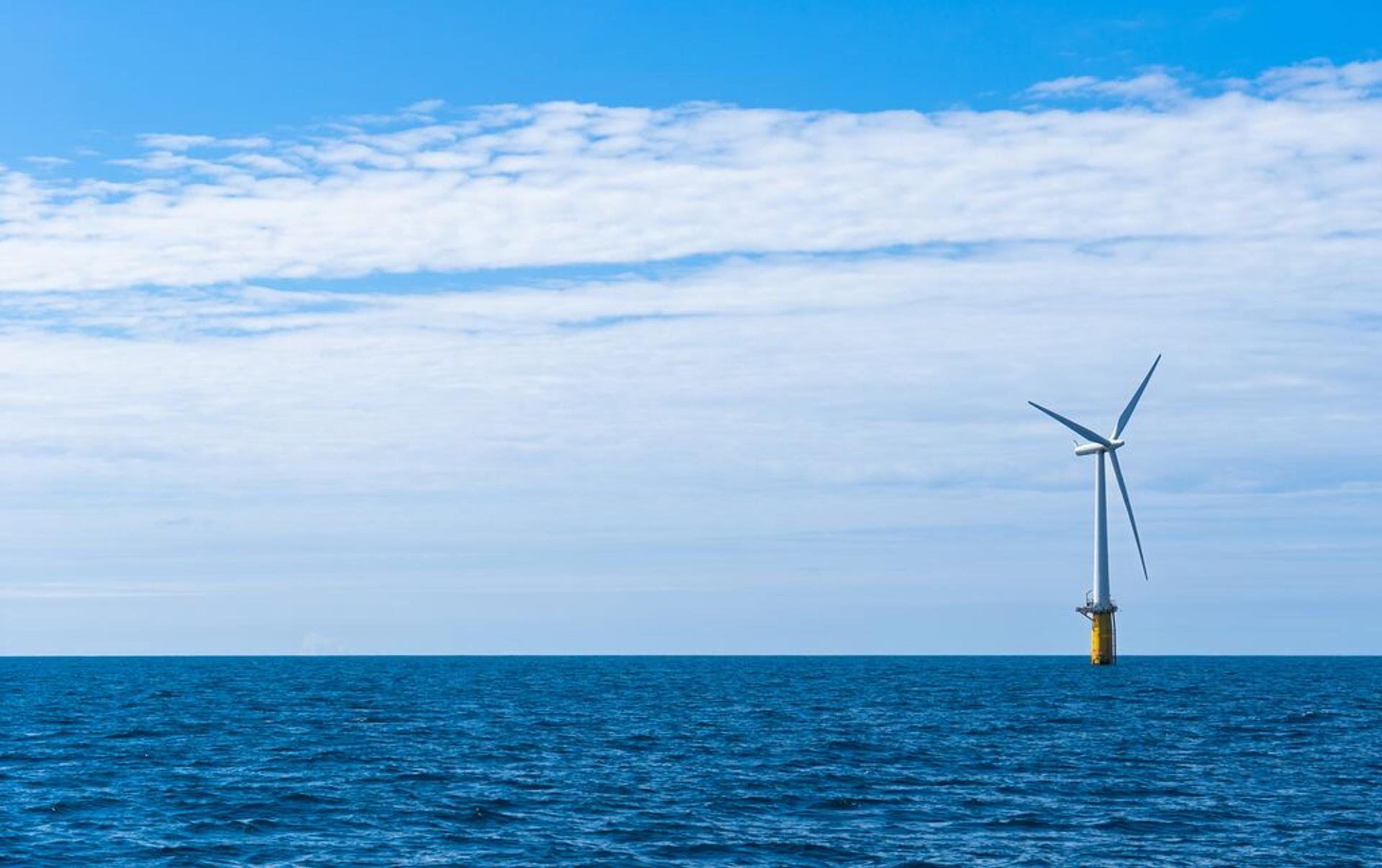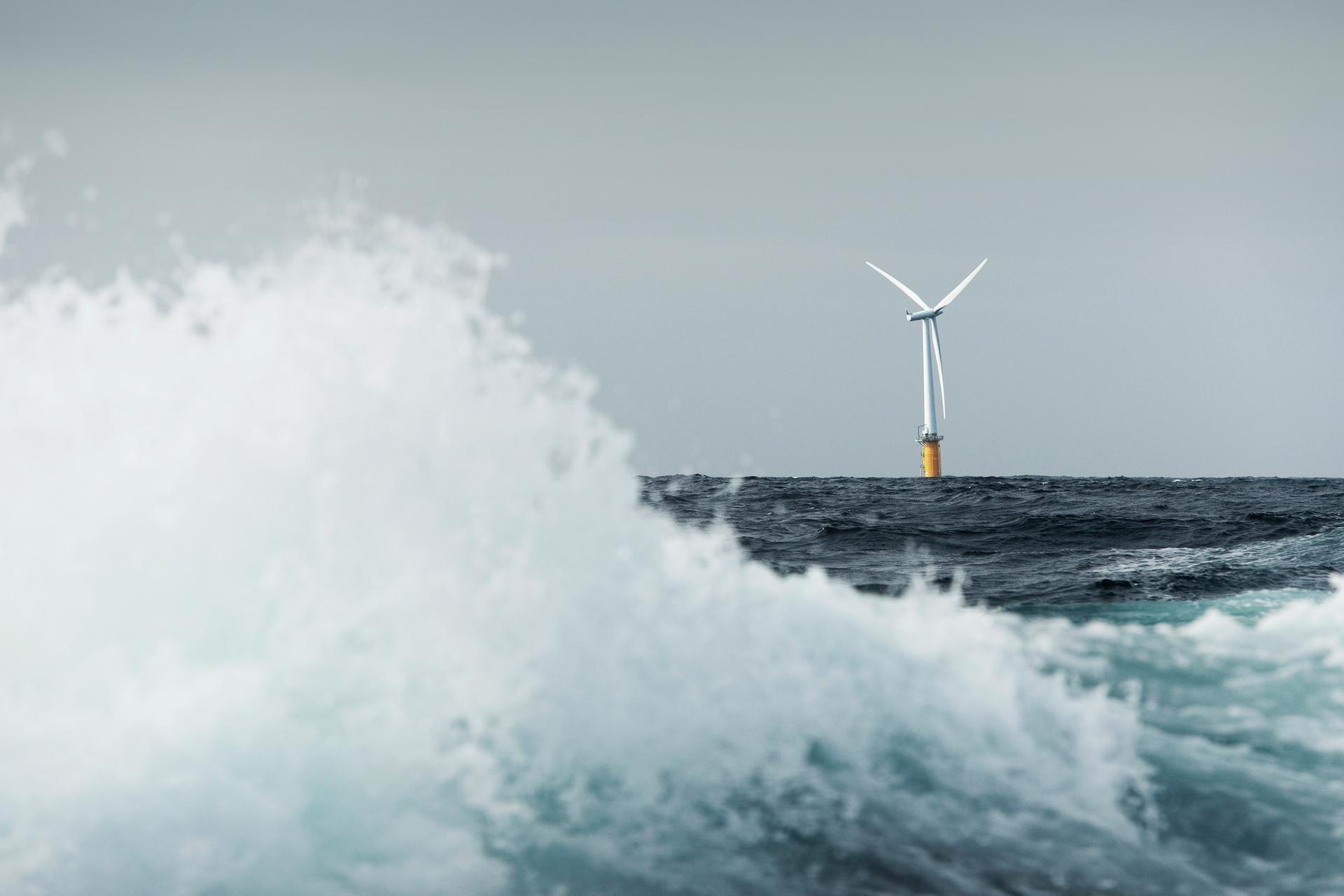

Powered by the world’s second longest coastline
Published 13 Nov 2023 (updated 28 Oct 2025) · 9 min read
Norway has always been powered by nature, especially the ocean.
It has the second longest coastline in the world after Canada, with a length of 100 915 km including all the islands.
The bountiful North Sea provides energy, innovation, and solutions that are exported around the world.
No wonder that Norwegians have relied for centuries on fishing and seafaring, along with farming, for their livelihoods. The same is true for Norway today, which has become a global leader in ocean industries. This includes offshore wind power, green maritime, and sustainable fisheries and aquaculture.
Innovation in the blood
The ocean has been the main mode of transport as well, and today Norway’s shipping fleet is the sixth largest in the world. Norway is also a leading producer of specialised vessels and maritime equipment worldwide.
Due to the harsh climate, high latitude and mountainous terrain, Norwegians are pioneers by necessity, Innovation is in their blood, and over the decades they have had to solve ocean-related challenges, such as shipping in the Arctic climate, wind energy production in deep waters and sustainable management of large fish stocks.
In addition, Norwegians are pioneers of sustainability. Today Norway is ranked seventh globally in its progress towards achieving the Sustainable Development Goals. Protecting the ocean environment is high on Norway’s agenda, and the government coordinates use of the sea by the ocean industries while setting strict standards for sustainable activity.
Offshore wind power
Along with vast ocean resources comes wind power – and lots of it. The Norwegian Government aims to allocate 30 GW of offshore wind capacity by 2040, producing almost as much new electricity as Norway consumes today and boosting Europe’s offshore wind industry.
When it comes to offshore wind, Norway has all the bases covered: world-class technology, digital solutions and a complete supply chain. The supply chain provides a wide range of services, equipment and solutions for offshore wind farms, from EPCI, HSE and risk management to vessels, cables and mooring systems.
Norwegian innovations across the board prioritise sustainability – from green port infrastructure and hydrogen-powered service vessels to subsea inspection robots and an IoT “seatbelt” for workers.
From oil to wind
In addition, Norway has decades of offshore sector experience, which is unique in Europe. Norway’s oil adventure began in 1969 with the Ekofisk discovery, and today former industry professionals have transferred their expertise to offshore wind. This is significant, as the technology and engineering behind offshore wind has more in common with offshore expertise than with wind farms on land.
This is perhaps best seen in Dogger Bank Wind Farm in the UK, the world’s largest wind farm scheduled for completion in 2026. The Norwegian energy powerhouse Equinor, along with its joint venture partners, has begun construction on the project which will produce enough energy to meet the needs of more than 6 million British homes.

Pioneers of floating offshore wind
The global floating offshore wind (FOW) industry was born in Karmøy, an island off of Norway’s rugged southwest coast. Here, the world’s first floating wind turbine, Hywind Demo, was installed in 2009 by Equinor. After eight years of operation, the project proved that the design concept performed well in all wind and wave conditions. In 2019, Unitech Offshore took over the ownership of the turbine and renamed it UNITECH Zefyros.
The Hywind Demo project paved the way for the 30 MW Hywind Scotland, the world’s first commercial wind farm using floating wind turbines. In operation since 2017, Hywind Scotland has demonstrated the feasibility of floating wind farms, reducing costs by almost 70 per cent compared with Hywind Demo.

Hywind Tampen largest in the world
In 2023, the 88 MW Hywind Tampen became fully operational.
The newest floating wind farm is also the largest, producing roughly half of the world’s floating offshore wind capacity.
It is groundbreaking in another way as well: Hywind Tampen is the first floating wind farm built specifically to power offshore oil and gas installations.
None of these developments would have occurred without Norway’s Marine Energy Test Centre (METCentre), located in Karmøy. Founded in 2009, METCentre is a global leader in North Sea testing of floating offshore wind and other marine renewables. The centre not only tests the technology, but the entire process from planning, logistics and transport to environmental impact and installation. It receives support from R&D environments at NTNU, SINTEF and the University of Bergen.
Comprehensive maritime ecosystem
Norway is pioneering a green maritime industry that focuses on sustainability, safety and cost-efficiency. The industry delivers world-class vessels and ship equipment, digital solutions to increase efficiency and lower emissions, a broad range of operations, management and support services, and expertise in conversion of existing vessels.

Award-winning electric ferries
Electric ferries are increasingly clean, quiet, smart, comfortable and efficient.
Norway has been successfully operating these zero-emission vessels for several years now.
Ampere has received several international awards, including the Seatrade Clean Shipping Award in 2015 and the Ship Efficiency Award in 2018. It was also named Ship of the Year in 2014. Medstraum, which will reduce emissions by 1 500 metric tons per year, was also named Ship of the Year, this time in 2022.
In addition, the ferry company Bastø Fosen operates the world’s largest e-ferry across the Oslofjord’s busiest commuter route.
Fastest electric workboats on the water
In the world of commercial workboats, power is important. Norwegian battery technology is busting the myth that electric motors cannot keep up with diesel. For certain uses, electric boats deliver plenty of muscle to do the job, with no emissions. Both new boats can be built and existing boats can be retrofitted.
The workboats are intended for use in diverse areas – from personnel transport, search and rescue, and surveying to ROV inspection, surface-supplied diving, and law enforcement.
One company at the forefront of this trend is Evoy, which delivers electric boat motor systems, primarily for boats of 15 to 50 ft. The motors have top speeds of over 50 knots and horsepower ranging from 120 to over 400. Evoy supplies boat motor systems to Hukkelberg Boats, which delivers a high-speed workboat made of lightweight aluminium, reducing weight while maintaining strength.
Moreover, other small commercial vessels and leisure boats are benefitting from similar tech advancements. Today, only a small proportion of these boats worldwide are electric, but this will change as battery technology improves and costs decrease.
Autonomous waterborne travel
Autonomous electric ferries are on the cutting edge of what is possible for clean urban mobility. In Norway, Hyke makes small, nimble ferries for urban mobility. The ferries feature an electric powertrain, built-in solar panels and automatic, high-power charging. Every vessel comes autonomy ready.
The groundbreaking ferry was named to Time Magazine’s list of “Best Inventions of 2022”.
Digital tech increases boat IQ
Digitalisation takes Norwegian electric boats to a new level of sophistication. This is the case for small commercial boats, workboats and leisure boats.
Smart boats can perform an impressive range of functions. This may include security and logistics systems, over-the-air updates and programmable motors. Remote stop, start and charging. Remote diagnostics and live monitoring from anywhere in the world. Geo-fencing to prevent theft and facilitate fleet management.

Hydrogen fuel for maritime use
Published 13 Nov 2023 (updated 28 Oct 2025) · 9 min read
As a world-leading producer of green and low-carbon hydrogen, Norway is a pioneer in hydrogen-powered ocean vessels.
A notable example is the MF Hydra – the world’s first ferry powered by PEM fuel cells operating on liquid hydrogen. These cells contain enough fuel for 12 days of sailing – an advantage over battery-electric vessels, which have a more limited range.
Moreover, new hydrogen ferries are now under construction for the three-hour trip between Bodø and Lofoten, Norway’s longest and most weather-exposed ferry route. In the EU-funded ShipFC project, the offshore support vessel Viking Energy will have the world’s first ammonia-powered fuel cell system ever installed on a ship.
Norwegian hydrogen supports decarbonisation of the maritime sector. Norway is a partner in the European Hydrogen Backbone initiative for new hydrogen infrastructure, and is also working to develop and operationalise hydrogen corridors to supply clean fuel for maritime transport.
Sustainable fishing and aquaculture
With its extended, biologically diverse coastline and centuries-long fishing traditions, Norway has tremendous expertise in aquaculture and fisheries. Although these industries can have a large environmental footprint, Norwegian technology makes it possible to produce fish sustainably and with less environmental impact.
Eco-friendly trawling
Trawling, the world’s most common industrial fishing method, harms marine environments when used in excess. In Norway, several innovations have been developed to make trawling more eco-friendly. FossTech, for example, delivers an automatic trawl sack expander that reduces fuel emissions, food waste and overfishing, while ECO Trawl is developing an electric trawling system that will increase catch volume by 20 per cent while significantly reducing fuel consumption, seabed damage and by-catch.
Innovative sea lice prevention
In aquaculture, sea lice are one of the most pressing challenges. Until now, drugs and chemicals have been the main method of controlling this pest, which attaches to fish’s body, causing disease. Sea lice, however, have begun to acquire resistance to delousing agents.
Norwegian companies have been using their creativity to prevent sea lice from attacking farmed fish. Harbor has created an electrical fence to inactivate sea lice before they attach to the fish, while Stingray Marine Solutions uses AI technology to scan each fish and destroy the lice one by one with a laser. As a preventive method, Fishency Innovation combines hardware with advanced machine learning to identify fish with traces of sea lice on their bodies.
Closed-system aquaculture improves fish welfare
Norway has numerous innovations in closed-system aquaculture, which is another way to solve the environmental challenges associated with coastal fish farms. Closed facilities prevent fish escapes, eliminating risks to wild fish stocks, and allow waste to be collected instead of being released. They also significantly reduce the risk of sea lice outbreaks.
In a cutting-edge concept, a donut-shaped closed fish farm, called the Marine Donut, improves fish welfare through a flow system that recreates the environment that salmon experience in rivers. The system also prevents escapes and contamination and minimises the risk of disease, algae and sea lice.
FishGLOBE, meanwhile, has developed a globe-shaped, fully enclosed, mobile fish farming unit. Seawater is pumped into the tanks from depths of 15 m, providing a cleaner, healthier environment for farmed salmon. Blue Ocean Technology’s compact, energy-efficient sludge treatment systems for aquaculture use recycled heat to cut costs and carbon emissions.
High-tech, circular RAS aquaculture
Recirculating aquaculture systems (RAS) are a prevalent land-based form of fish farming in Norway. RAS provides highly controlled production conditions that can be tailored to the needs of the animal. This includes control of temperature, oxygen and pH, as well as water flows, water speed and the addition of new water.
To maximise sustainability, EcoFishCircle has designed a next-generation RAS using advanced technologies such as carbon capture from fish respiration, blockchain and artificial intelligence. Scalable and modular, the innovative system consists of individual, self-contained tanks with in-tank biofilters and connected sludge handling. Other Norwegian suppliers of RAS solutions include MAT-KULING and Kaldnes.
Use of marine waste
In terms of mass, 35 per cent of the harvest from fisheries and fish farms worldwide is residual materials, such skin, guts, heads and bones from fish and shells from shellfish. Norwegian companies are adept at not letting marine residuals go to waste. Approximately 82 per cent of the harvest from Norwegian fisheries and fish farms is utilised in one way or another.
Some good examples are the conversion of fish waste to fish meal, fish oil and biofertiliser. In addition, discarded nets and ropes are recycled for use in new plastic products, while salmon skin is processed into treated and untreated leather for use in shoes, handbags and the like.






